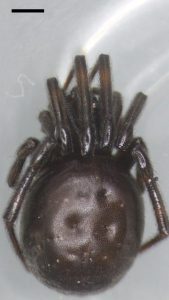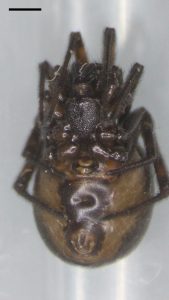We were out spider-huntin’ again today, adding more data to the collection, and finding this Steatoda, which is about as big as they get. We’ve captured a couple of representatives of this species now, but they’re all female.
We limit the number we capture to one or two a day, because we don’t want to perturb the local populations too much. I’m only planning to breed Parasteatoda tepidariorum, though, so I’m going to have to do something with the other species we find…I’m probably going to release them all at my house, since I did so much collecting here that the population is hopelessly messed up already, which may turn my house into a weird little hotbed of exotic spider diversity.
I wonder if that will increase the property value? It should.




Check for any mismanged toxic waste dumps in the area before releasing any spiders, otherwise you could have an Arachnids in Morris situation.
Are spiders more likely to eat spiders of a different species? Or will they pretty much eat whatever crosses their path. Flip side of the question: Does greater spider diversity result in greater spider concentration/prevalence? Or less? Or doesn’t matter?
“We limit the number we capture to one or two a day, because we don’t want to perturb the local populations too much.”
Sorta like alien abductions.
Exactly. The majority you might catch, probe briefly, and release back into the wild.
Do you spider scientists ever use a scale in photography?
Scales are usually labelled.
That little black bar in the upper left hand corner is the scale, representing 100K light-years. Basically, the spider is about four Milky Way galaxies wide, and somewhat longer. Obviously an immature juvenile.
blf
You never disappoint.
What are the big oval ones with, like, mile-long legs? I saw one on the door-jamb today and was just curious.
That’s actually a 1mm scale, sorry to say. These spiders are typically 6-7mm across.
The big oval ones aren’t spiders — they’re Opiliones, or daddy long legs. That is, if there is just one oval ball of body. The Pholcidae are also called daddy long legs, but they have an abdomen and cephalothorax.
There goes poopyhead’s Nobel Prize for an important discovery concerning Dark Matter. The “halo” seemingly surrounding galaxies is the body of a Dark Matter Spider that ate(?) the galaxy. Or is possibly about to defecate the galaxy as waste… which suggests a galaxy is the digested remains of a male Dark Matter Spider.
Thanks!